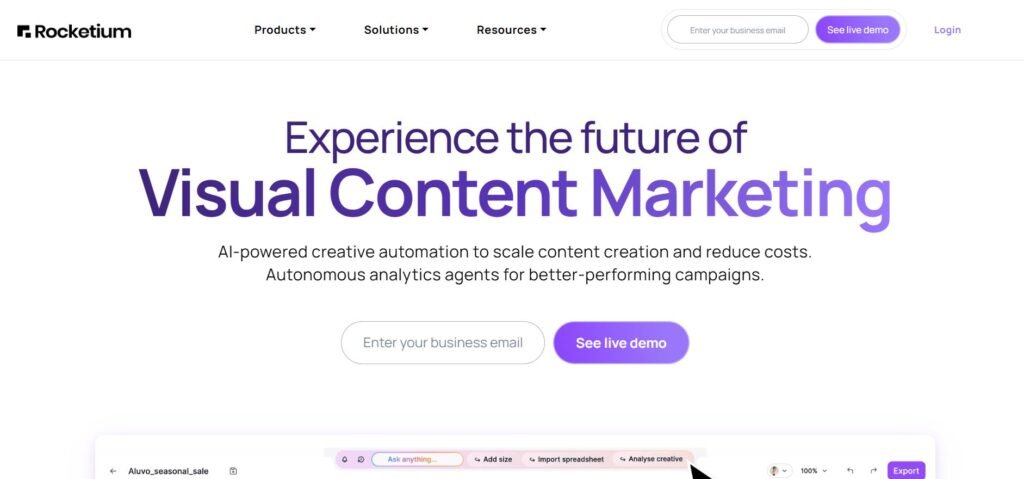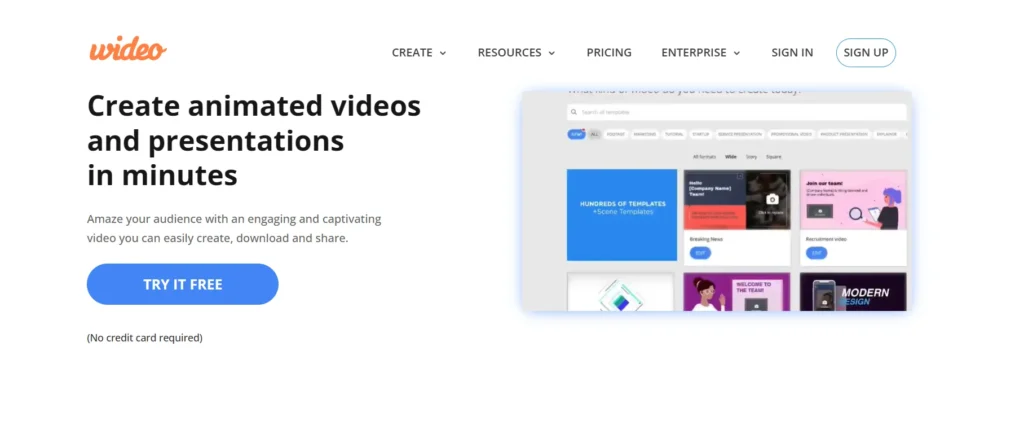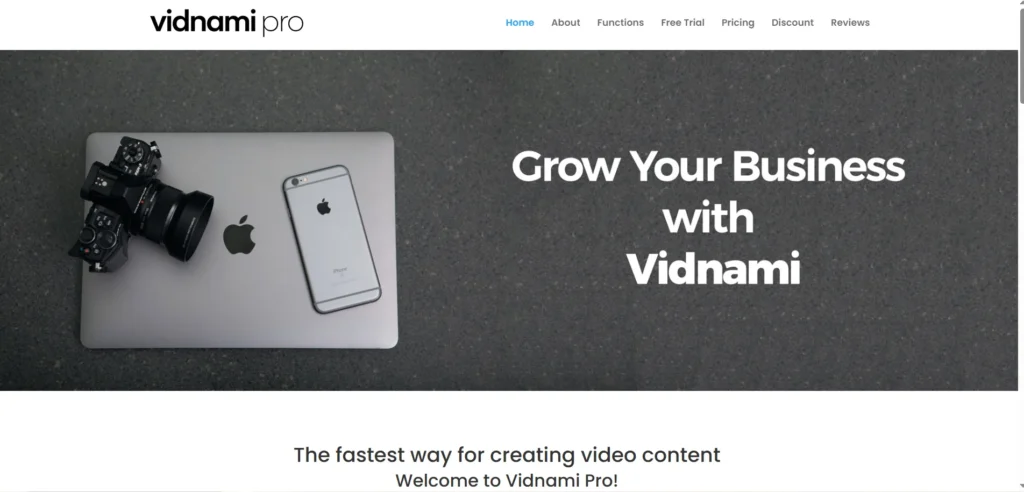Rocketium is a cloud-based creative automation platform designed to help teams produce visual content at scale. Whether you’re part of a marketing department, a design team, or a content production agency, Rocketium offers tools to streamline the creation of videos, banners, and other digital assets. With its focus on automation and collaboration, it’s particularly appealing to organizations that need to generate large volumes of branded content quickly and consistently. But is it the right fit for your workflow? Let’s take a closer look.
Is Rocketium Right for You?
Rocketium is best suited for businesses and teams that need to produce a high volume of visual content without sacrificing brand consistency. This includes marketing teams at e-commerce companies, digital agencies managing multiple client campaigns, and internal creative teams at large enterprises. The platform is especially useful for those who want to reduce their reliance on manual design processes and speed up content production through templates and automation.
However, Rocketium may not be ideal for solo creators, freelancers, or small teams with limited content needs. Its feature set is geared more toward scaling production rather than offering deep customization or artistic flexibility. If you’re looking for a tool to create one-off, highly customized designs or videos, you might find Rocketium’s templated approach somewhat restrictive.
What It Does Well
- Template-based content creation
- Creative automation and bulk editing
- Brand consistency tools
- Collaboration and workflow management
- Integration with data sources and APIs
One of Rocketium’s standout features is its ability to automate the creation of visual assets using templates. For example, a retail brand can generate hundreds of product banners by feeding a spreadsheet of product data into Rocketium. The platform automatically populates the templates with the correct images, prices, and descriptions, saving hours of manual design work.
Another strength is its focus on brand governance. Teams can lock certain elements of a template—like logos, fonts, or color schemes—ensuring that all content adheres to brand guidelines. This is particularly useful for large organizations with multiple contributors, as it reduces the risk of off-brand visuals slipping through the cracks.
Where It Falls Short
Despite its strengths, Rocketium does have some limitations. First, its design flexibility is somewhat constrained by the template-based system. Users looking for pixel-perfect control or highly customized animations may find the platform limiting compared to traditional design software.
Second, the learning curve can be steep for non-technical users, especially when setting up automation workflows or integrating external data sources. While the interface is generally user-friendly, some of the more advanced features require a deeper understanding of how the platform works.
Free vs Paid: What’s the Catch?
Rocketium offers a free plan, but it comes with limited features. Typically, the free version allows users to explore the interface, create a few basic projects, and test out some templates. However, access to automation tools, team collaboration features, and advanced integrations is restricted.
Upgrading to a paid plan unlocks the full suite of features, including bulk editing, API access, brand asset management, and workflow automation. For teams that need to produce content at scale or collaborate across departments, the paid version can be a worthwhile investment. However, for individuals or small teams with modest needs, the free plan may be sufficient for occasional use.
Are There Alternatives?
- Canva – A user-friendly design tool with a strong focus on templates and collaboration.
- Crello – Similar to Canva, with a wide range of templates and animations.
- Bannerflow – A platform focused on banner ad creation and automation for marketing teams.
Each of these tools offers a different balance of ease-of-use, customization, and automation. Depending on your specific needs, one of them might be a better fit—or a useful complement—to Rocketium.
Verdict
Rocketium is a powerful tool for teams that need to produce large volumes of branded content quickly and efficiently. Its strengths lie in automation, brand consistency, and collaborative workflows, making it a solid choice for marketing departments and creative teams at scale. However, it may not be the best fit for solo creators or those seeking deep design flexibility.
If your primary challenge is scaling content production while maintaining brand standards, Rocketium is worth exploring. But if you’re looking for a more hands-on, creative design experience, you might find more satisfaction in alternative tools with greater artistic control.



